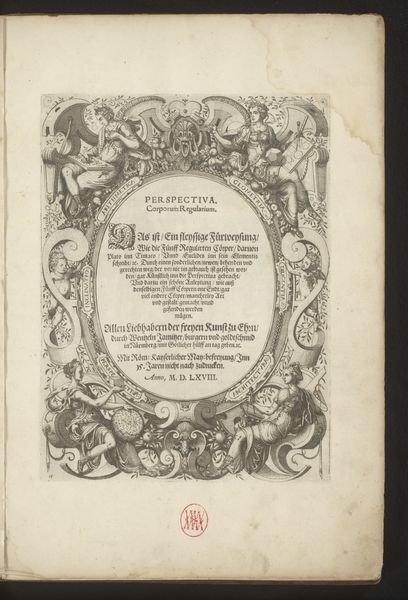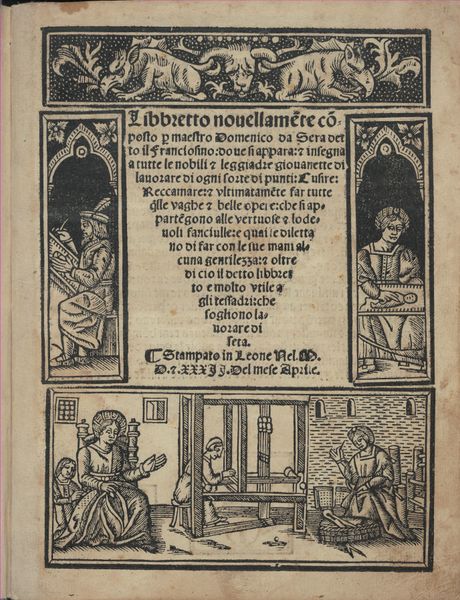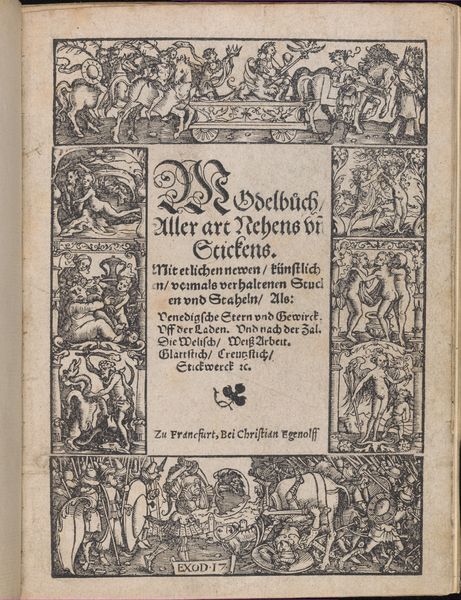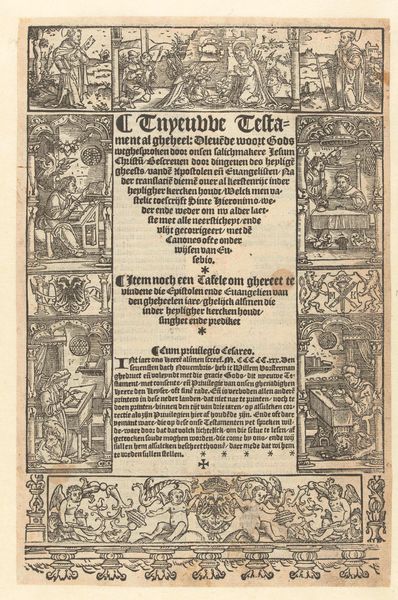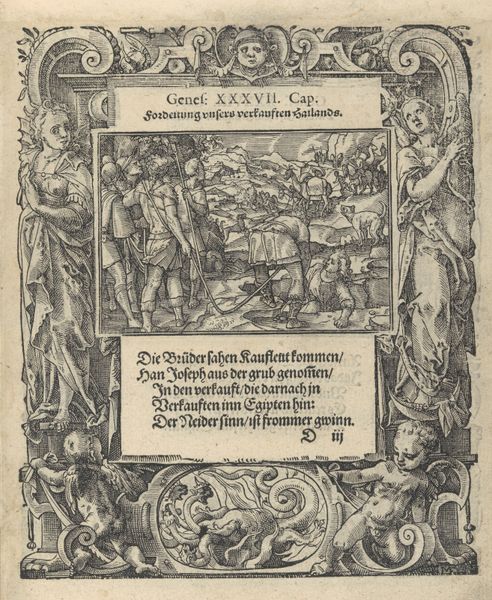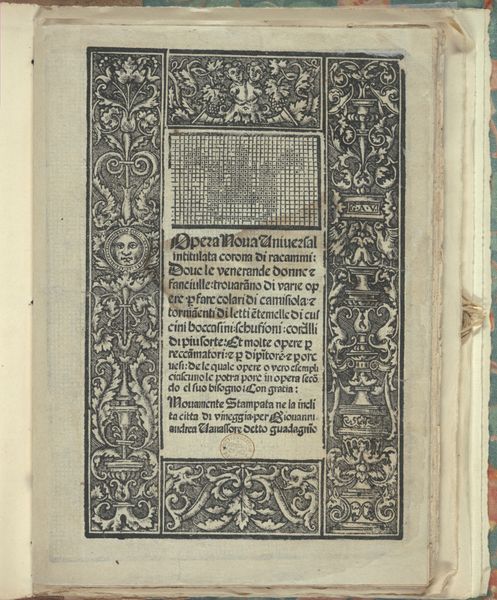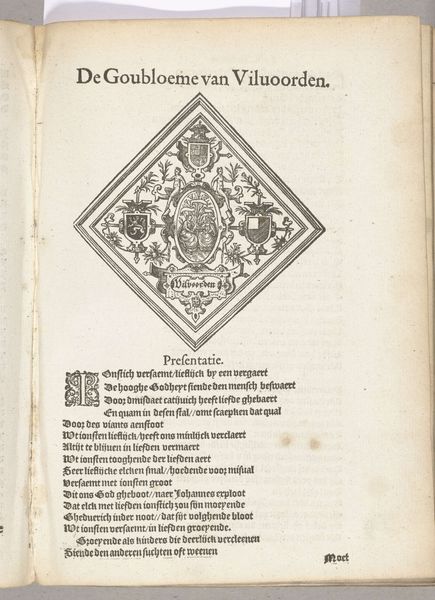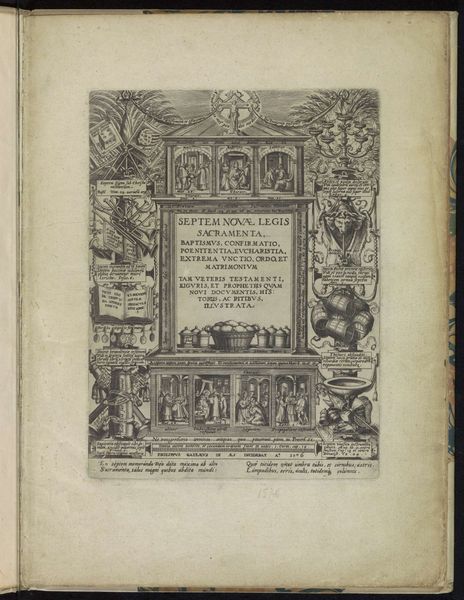
drawing, print, textile, woodcut
#
drawing
# print
#
textile
#
woodcut
#
northern-renaissance
Dimensions: sheet: 7 7/8 x 5 1/2 in. (20 x 13.9 cm)
Copyright: Public Domain
Editor: This is “Border,” a woodcut print made around 1518 by Daniel Hopfer. It’s currently housed at the Metropolitan Museum of Art. I’m immediately drawn to how the ornate border contrasts with the block of text. It feels almost like a frame within a frame. How do you interpret this work? Curator: This print operates on several levels. First, consider its function. It's a decorative border, likely for a book page, a fragment of a larger context. The text within, although prominent, is subservient to the visual impact of the border itself. This immediately raises questions of power and influence within Renaissance society, doesn't it? The Church's written word is visually contained by these sometimes monstrous and animalistic illustrations. Editor: That's fascinating! I hadn't thought about it in terms of power dynamics. What do you mean by monstrous? Curator: Look closely. Do you see the hybrid creatures interwoven within the foliage? These are common motifs in Northern Renaissance art, reflecting a period grappling with anxieties about the unknown and the heretical, and reflecting how these concepts exist just beyond the structures of power in society. They're positioned as marginalia – literally and figuratively – on the edge of what’s deemed acceptable. Editor: So, the border isn't just decorative; it's actively engaging with the text and the ideas it represents? Curator: Precisely! Hopfer is using visual language to comment on the relationship between knowledge, authority, and the lurking "other." And think about printmaking itself at this time – it made it possible for art to disseminate. Whose stories did print technologies make *more* available, and whose did they silence? The details in these seemingly ornamental flourishes actually speak volumes. Editor: I never would have looked at it that way! Now, the border seems so much more subversive and thought-provoking. Curator: That’s the beauty of engaging with art through different lenses. These works open a space for continuous reinterpretation, which prompts essential questions about our past and present.
Comments
No comments
Be the first to comment and join the conversation on the ultimate creative platform.
